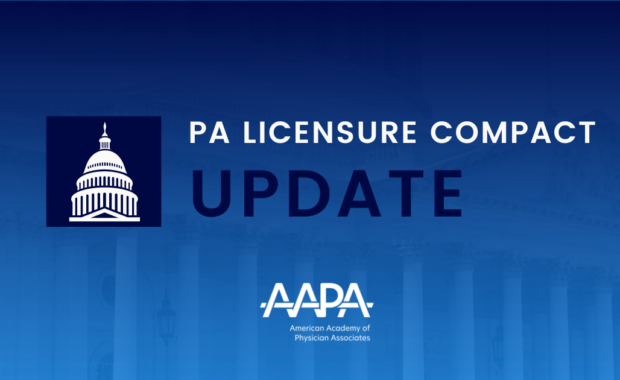Changes to E/M Codes: What PAs Need to Know
Understand New Requirements
May 4, 2021
By Emily Hill, PA
A new code structure for new and established outpatient Evaluation and Management (E/M) services is in effect beginning January 1, 2021. Along with the revised codes, documentation requirements were also changed. Medical documentation is instrumental in providing patients with quality care, helping healthcare providers evaluate and plan the patient’s treatment and maintain the continuum of care, ensuring accurate and timely payment for the services furnished, and mitigating malpractice risks. The intent of these changes is to reduce the administrative burden associated with documentation and improve the quality and usefulness of the clinical note. The time saved on unnecessary documentation should lead to increased time to address the clinical needs of your patients.
[Help further AAPA’s advocacy work – join or renew your membership today]
How the New Codes Work
To gain back your time and protect yourself from audit liability, PAs need to understand how the codes are structured and what is required in your clinical documentation.
The revised E/M codes redirect code selection only to levels of medical decision making or time. Documentation of an extensive history and/or examination that may have minimal impact on patient care is no longer required. In fact, the history and examination are no longer considered in the selection of E/M code levels. As always, medical record documentation should reflect the relevant clinical information necessary for you and others to care for your patients. This change, while welcome, requires us to think about medical decision making somewhat differently. The basic structure for determining medical decision making continues to consider the broad categories of problems, data, and risk. However, some elements are now quantified and there are new definitions and guidelines that are important for selecting the appropriate level of E/M service codes.
[The Essential Guide to PA Reimbursement]
The selection of an E/M code using time is now based on the total time on the day of the encounter and is reflected in a range of times for each code. This allows providers to account for the clinical work with a patient before, during, and after the face-to-face visit.
To realize the benefits of these changes, you need to understand the new structure and guidance for selecting levels of care. If your work is primarily in the hospital setting, it’s still important for you to begin to understand this new approach as it will apply to hospital-based E/M services in the future.
CME to Help Further Your Understanding
Still have questions? Check out AAPA’s CME Central module “Evaluation and Management Services in 2021.” Free to members, this CME will help you understand the new approach to E/M services. Register now and set yourself up for success in your practice.
Emily Hill, PA, practiced clinically before focusing her career on coding and compliance issues as a healthcare consultant.
For more information regarding reimbursement issues and E/M service codes, contact AAPA’s reimbursement team at [email protected].
You May Also Like
CME Module: Evaluation and Management Services in 2021
The Latest on Reimbursement for PAs
The Essential Guide to PA Reimbursement
Thank you for reading AAPA’s News Central
You have 2 articles left this month. Create a free account to read more stories, or become a member for more access to exclusive benefits! Already have an account? Log in.



